-
 "Viva el Tango" by Raúl Garello y su Orquesta Típica with Roberto Goyeneche in vocals, 1991 (with English translation of the lyrics).So you don’t like Gotán, che? I'm sorry, too bad for you...
"Viva el Tango" by Raúl Garello y su Orquesta Típica with Roberto Goyeneche in vocals, 1991 (with English translation of the lyrics).So you don’t like Gotán, che? I'm sorry, too bad for you...
Argentine Tango Music
Listen and learn about all the orchestras, conductors, musicians, and singers.
Biagi, Rodolfo
Y su Orquesta Típica
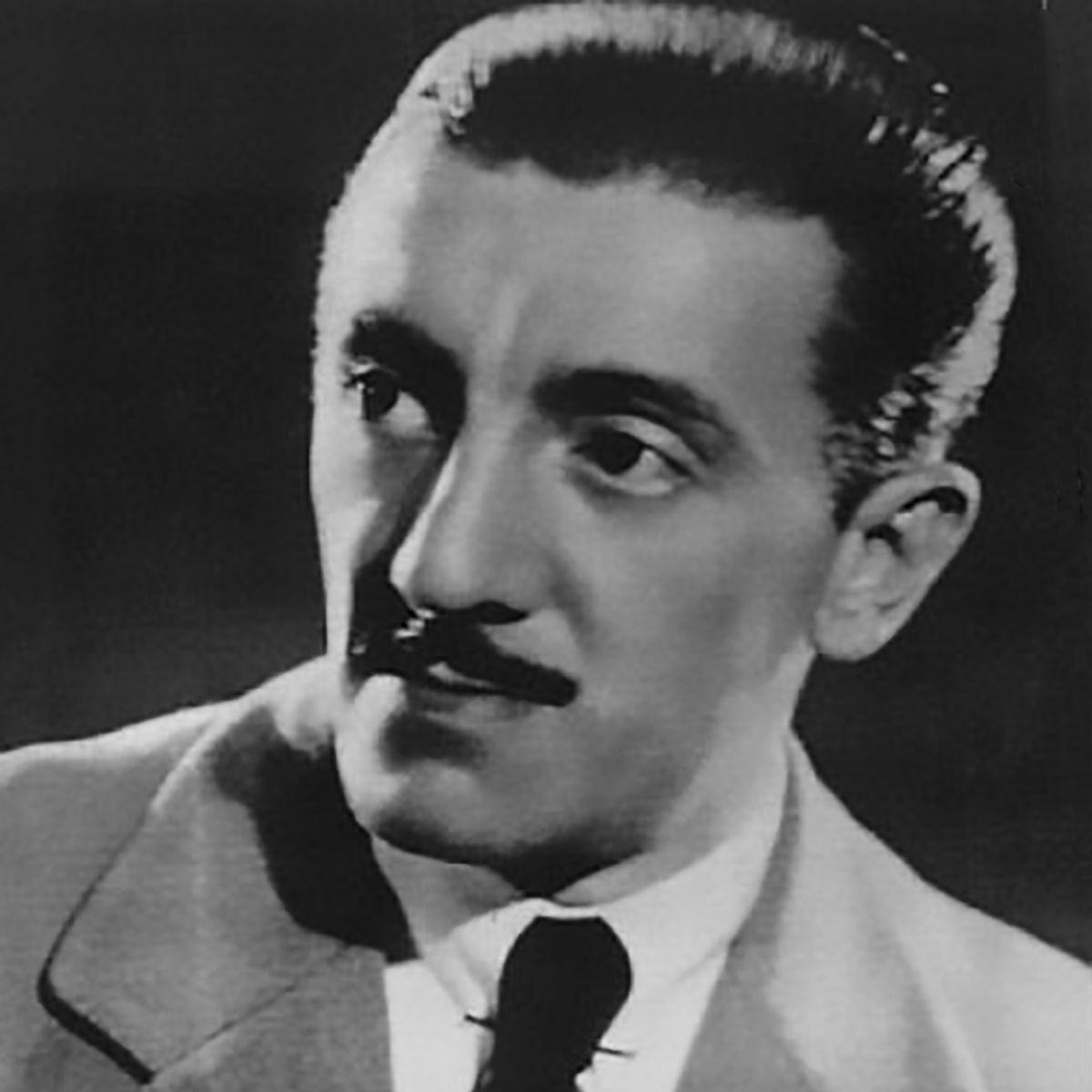
To successfully shape a style and an unmistakable personality, within a very simple musical fashion, to a certain extent, means a great achievement. This is the case of Rodolfo Biagi, born in the Buenos Aires neighborhood of San Telmo. When he finished grammar school, he gave up his studies to devote himself to music.
Caló, Miguel
Y su Orquesta Típica

The Miguel Caló orchestra will be remembered as the best tango performance, one that goes beyond its age and that today is recognized for its great artistic qualities and by a dancing group that permanently evokes it with the notes of “Sans Souci”, maybe its emblematic interpretation. The forties reveal us the maturity of this great director, capable of assembling an outfit of young musicians of extraordinary capacity and professionalism.
Canaro, Francisco
Y su Orquesta Típica

Born in Uruguay, his is a dense story, crowded with situations, full of anecdotes, some of which became mythical. A boy born in the deepest poverty, he had no studies, his only choice was work. When with his right instinct he found the path of music, he achieved what he aimed for: success and money.
D’Agostino, Ángel
Y su Orquesta Típica
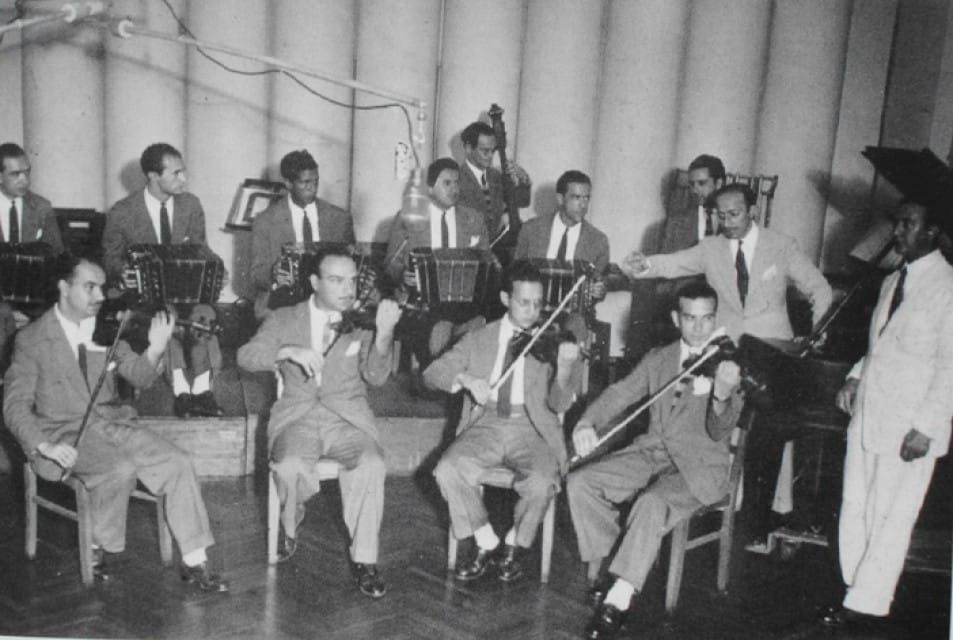
His orchestra had magic and that magic was perceived without need of grandiloquence, nor stentorian deeds. Everything was achieved through its simplicity and its good taste.
The bandoneonist, composer and arranger Ismael Spitalnik made the following remark: “In January 1940 I started with D’Agostino and when today I listen to the recordings I realize it sounded folk-like and simple. It precisely succeeded because of its simplicity, its clear and simple language, because of its singer Angel Vargas‘s way of expression, which allowed the audience to perfectly understand the lyrics. Furthermore he had chosen a refined repertoire, very nostalgic and much different to others’”.
D’Arienzo, Juan
Y su Orquesta Típica
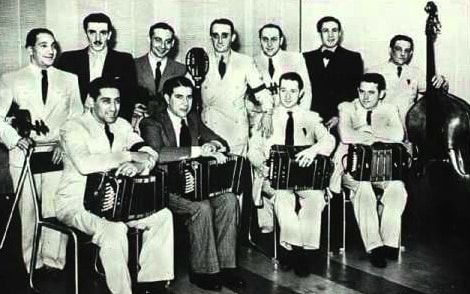
In 1936 Juan D’Arienzo successfully appeared in the disputable territory of popularity. He was just 35 years old, one less than Julio De Caro–stylistically placed on the other end of the musical horizon of tango- he had been a star since 1924 and D’Arienzo started to become one when Pablo Osvaldo Valle took him to the brand new El Mundo radio station. What in no way meant, at all, that D’Arienzo were a late tango player. Like almost all the musicians in those days, he started in tango as a boy.
De Ángelis, Alfredo
Y su Orquesta Típica
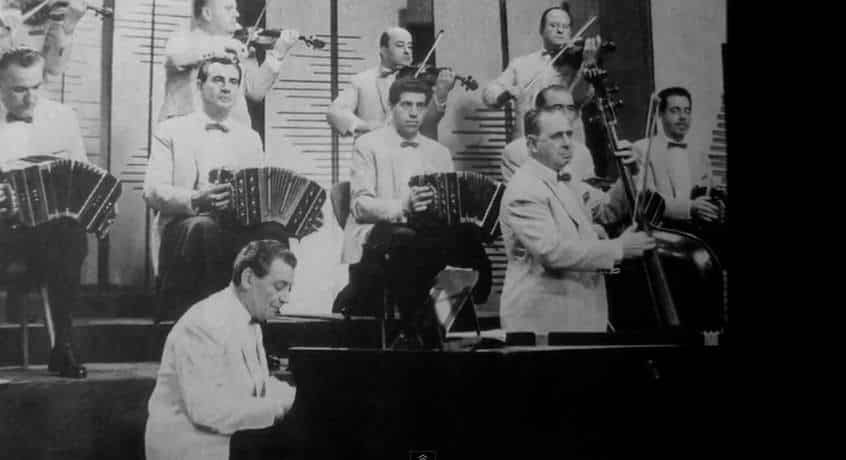
Alfredo De Angelis belongs to the group of orchestras that focused their interest on dancing. This, however, does not mean they lacked artistic value, on the contrary, they were precise in execution, with good arrangements and were lined-up with great musicians and vocalists. De Angelis had the beauty of a harmonious and synchronized work, from which a neat simple tango was evidenced, achieved through an efficient handling of rhythm, a careful respect for melody and the showcasing of the singer.
Demare, Lucio
Y su Orquesta Típica
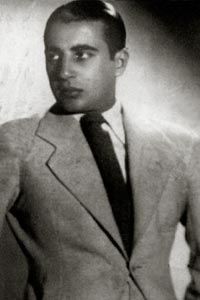
A player of unmistakable sound and phrasing, he has been an authentic speaker with his piano. An intimate mood playing which is exactly exemplified by many of his recordings.
Involved, by reasons of intimate aesthetic affinity with the Romantic school. An innate faculty for musical invention and a delicate creative temper identified, from the very beginning, the characteristics of his work.
Di Sarli, Carlos
Y su Orquesta Típica
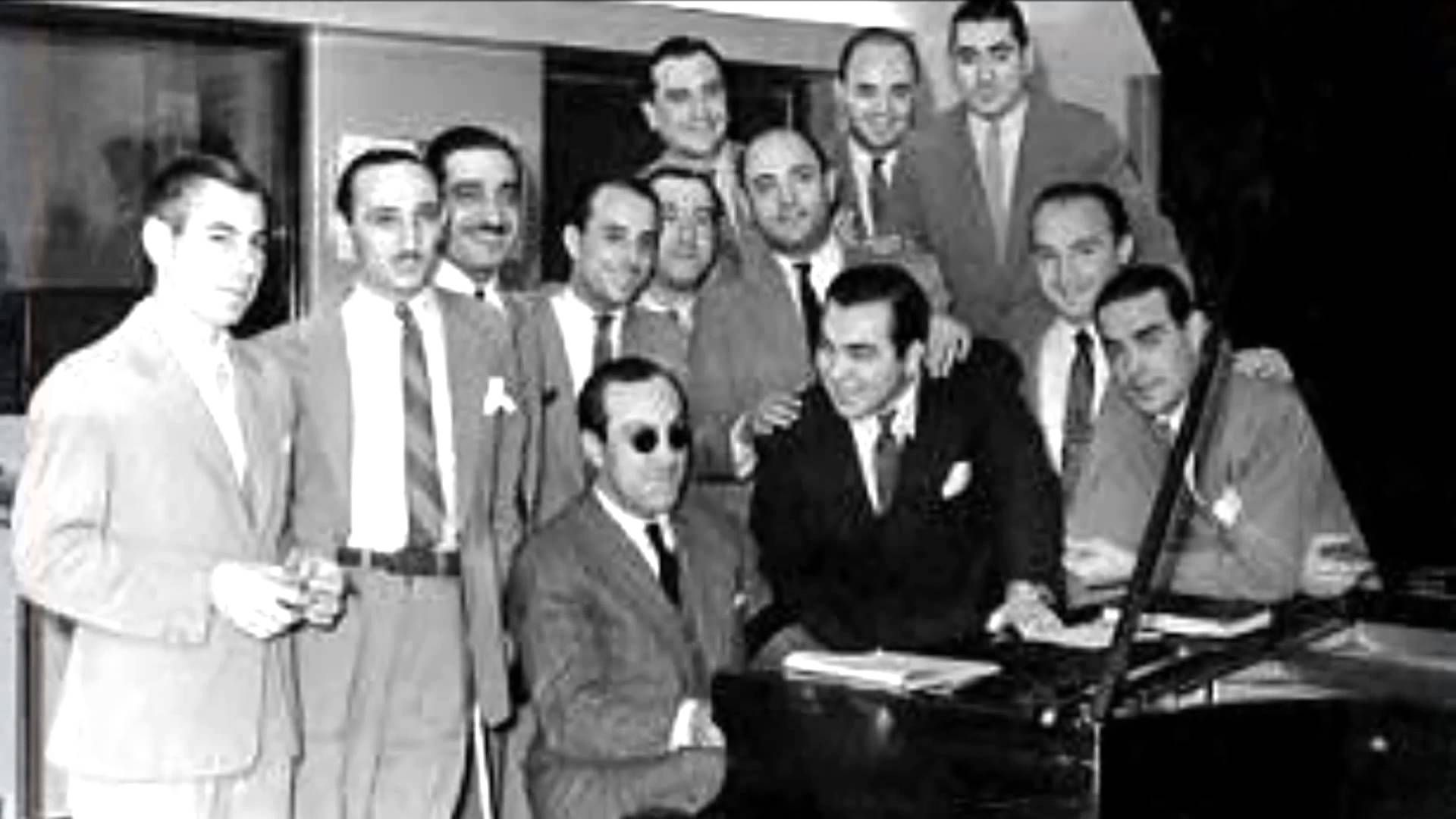
He, as nobody else, knew how to combine the rhythmic cadence of tango with a harmonic structure, apparently simple, but full of nuances and subtleties. He was not enrolled for any of the two streams of his time. His was neither a traditional orchestra, styled after Firpo or Canaro nor a follower of the De Caro renewal. Di Sarli imposed a seal of his own; a different musical profile, which remained, unaltered throughout his prolonged career. In the beginning, his sextet reveals us the influence of Osvaldo Fresedo. And certainly, I think there would have never been a Di Sarli had not existed a Fresedo. But, only as necessary forerunner of a style that, with time, would become a pure model with its own and differentiated nature.
Donato, Edgardo
Y su Orquesta Típica
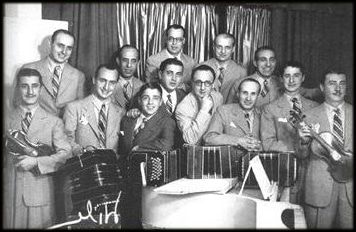
The orchestra of Edgardo Donato had a phrasing wrapped up in wider dynamics, where the showcasing of bandoneons and Donato´s frequent interventions as soloist was evidenced. His performances on radio were continuous, as those he made at cabarets and clubs. It was one of those which were included in the movie Tango, from 1933, the first movie with complete soundtrack in the history of Argentine cinema. His was a dance orchestra. He was composer of over two hundred numbers, some of them true classics of the tango repertory: “A media luz”, “Julián”, “Muchacho”, “El huracán”, “T.B.C.” and others, also important, such as “Se va la vida”, “El acomodo”, “Mi serenata”, “El lengue”, “Pensalo bien”.
Fresedo, Osvaldo
Y su Orquesta Típica

Born in Buenos Aires to a wealthy family seems to have influenced his art: his orchestra, refined and aristocratic, was the favorite of upper circles. However, despite Osvaldo’s father was a rich businessman, at the age of ten, his family moved to La Paternal, a neighborhood somewhat away and humble, with flat houses in a popular surrounding which had its effect on his destiny. It was there where he started playing the bandoneon. His was the longest tango career ever found: over 1,250 recordings along 63 years.
García, José
Y sus Zorros Grises
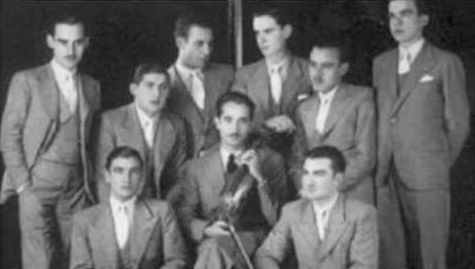
He was born in the neighborhood of Barracas —in the southern area of the city of Buenos Aires—, since the age he reached the faculty of reasoning an interest for music awoke in him; he played several instruments, among them, piano, violin and bandoneon. His intention was not, as in fact happened, to become the leader of a tango orchestra. His purpose was a very different one, but reality teaches that the most natural thing in life is that plans and projects, conceived at a time when future is regarded with that great optimism we all have in our youth, will be later modified.
Gobbi, Alfredo
Y su Orquesta Típica
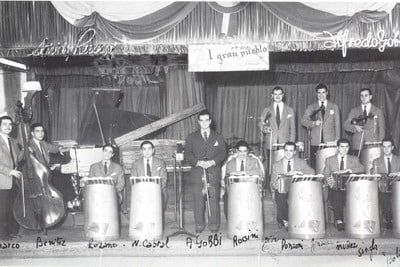
The multiple facets of Alfredo Gobbi’s personality -composer, violinist, arranger and orchestra leader- granted him a well-deserved and indisputable recognition among the most qualified and important music interpreters of tango. Because Alfredo Gobbi –The Romantic Violin of Tango- not only bore the responsibility of an inherited prestigious artistic name. He brought the very personal creation of a tango style.
Laurenz, Pedro
Y su Orquesta Típica

A great tango personality, as bandoneon player, composer and as orchestra director. He was a bandoneon player of great techniques, skilful with both hands (high and low-pitches), superb in sound, energetic in performances and vehement in phrases. He was the founder of a performance school. He composed outstanding tangos and wrote exquisite variations for pieces such as “Mala junta” and “Mal de amores”. The climax of his trajectory came between the mid-20s and mid-40s.
Lomuto, Francisco
Y su Orquesta Típica
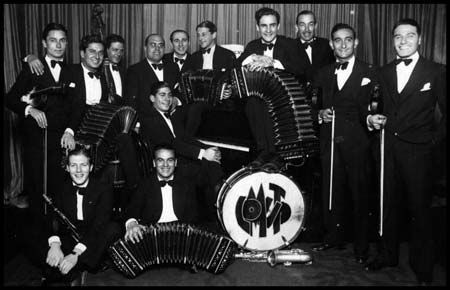
His orchestra had a very definite personality, a good beat, was stylistically orthodox, and was not after a creative goal, but rather a suitable vehicle for dancing, of a pleasant musicality. On other aspects, it stood out as well for its peculiar endings with the diminished seventh as a sort of trademark.
Malerba, Ricardo
Y su Orquesta Típica
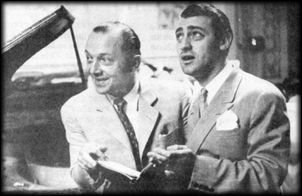
By means of the connections of his sister-in-law, Libertad Lamarque, he signed a contract to play on Radio Belgrano, on condition of playing a rhythmical tango in a D’Arienzo-like style. He debuted with his own orchestra on March 1, 1938 and stayed at that radio station for over twenty years.
Gradually he was gaining the people’s recognition, slower than Juan D’Arienzo’s, much liked by dancers and easy listening.
The vocalist most deeply identified with the orchestra was Orlando Medina.
Orquesta Típica Victor
OTV

When the directors of the record label came up with the formation of an orchestra to represent the company, they turned to a classically trained pianist, who had not yet ventured into the tango: Adolfo Carabelli.
Pugliese, Osvaldo
Y su Orquesta Típica
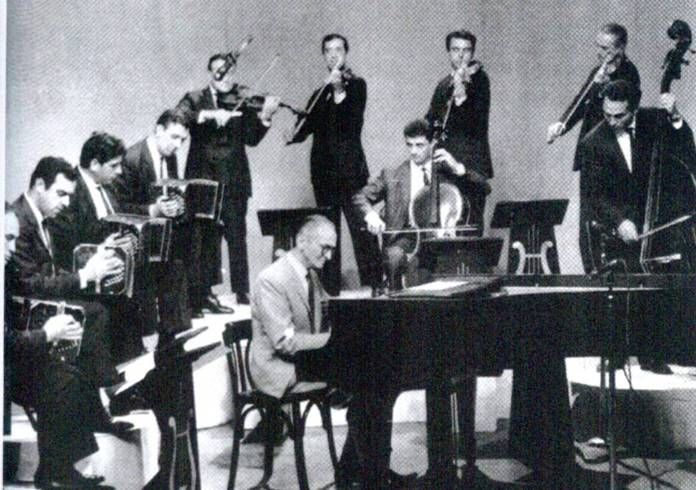
In the 40s Pugliese recorded some instrumental pieces of his own which anticipated the avant-garde. Such is the case of “La yumba” (which became a sort of anthem of his orchestra), “Negracha” and “Malandraca”. Because of these two latter, he is regarded as a pioneer in the use of syncopation and counterpoint prior to Horacio Salgán and Astor Piazzolla. Other important tangos Pugliese composed and played are, above all, the aforementioned “Recuerdo“, and “La beba”, “Adiós Bardi”, “Recién“, “Barro“, “Una vez” and “El encopao“.
Rodriguez, Enrique
Y su Orquesta Típica

This peculiar musician is a faithful follower of the traditional rhythmical style played by Edgardo Donato and Juan D’Arienzo. Criticized by innovators and praised by the dancers, his orchestra enjoyed a great popularity in the forties and fifties, either in Argentina or in the rest of Latin America. His style was a breakthrough for the groups of the period, because he played all kinds of genres, introduced miscellaneous instruments and his repertoire, always assorted, only included merry or romantic tunes. But when he played tango, you heard the brilliant sound of a well-rehearsed orchestra, with simple nice arrangements and also with very good vocalists.
Tanturi, Ricardo
Y su Orquesta Típica
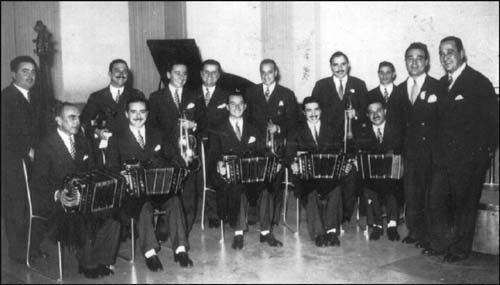
Tanturi led for several decades a renown orchestra which owed its success basically to the strong appeal of some of its singers. For this reason, the instrumental pieces played by his orchestra are few and little recalled. However, his fame would persist a long time and in the last years with the success of tango dancing, Tanturi recordings are perhaps the favorite. Moreover, some of his recordings have become classics.
Troilo, Anibal
Y su Orquesta Típica
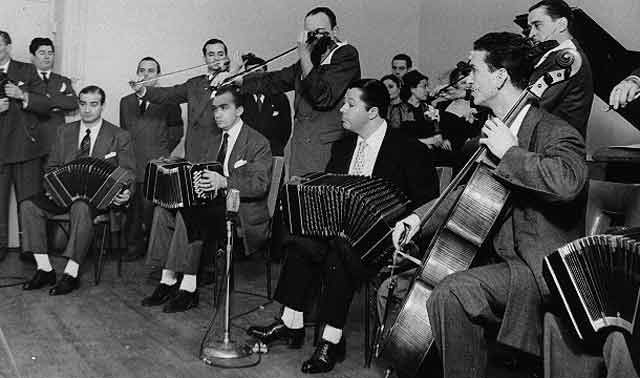
He was one of those few artists who made us wonder what mystery, what magic produced such a rapport with people. As a bandoneon player, he was neither a stylist like Pedro Maffia, nor a virtuoso like Carlos Marcucci, nor a multiple creator like Pedro Laurenz, nor a phrasing player like Ciriaco Ortiz. But he had something of them all and he was, precisely, a master of personality and feeling in his expression. As an orchestra leader, he dug an undoubtedly tango style, balanced, without histrionisms and of undeniable taste. He knew how to choose the best players according to his musical ideas, he selected good singers, who beside him achieved their best, to such an extent that when they left the orchestra, only partially and for a short time could they reach a similar level.
Varela, Héctor
Y su Orquesta Típica
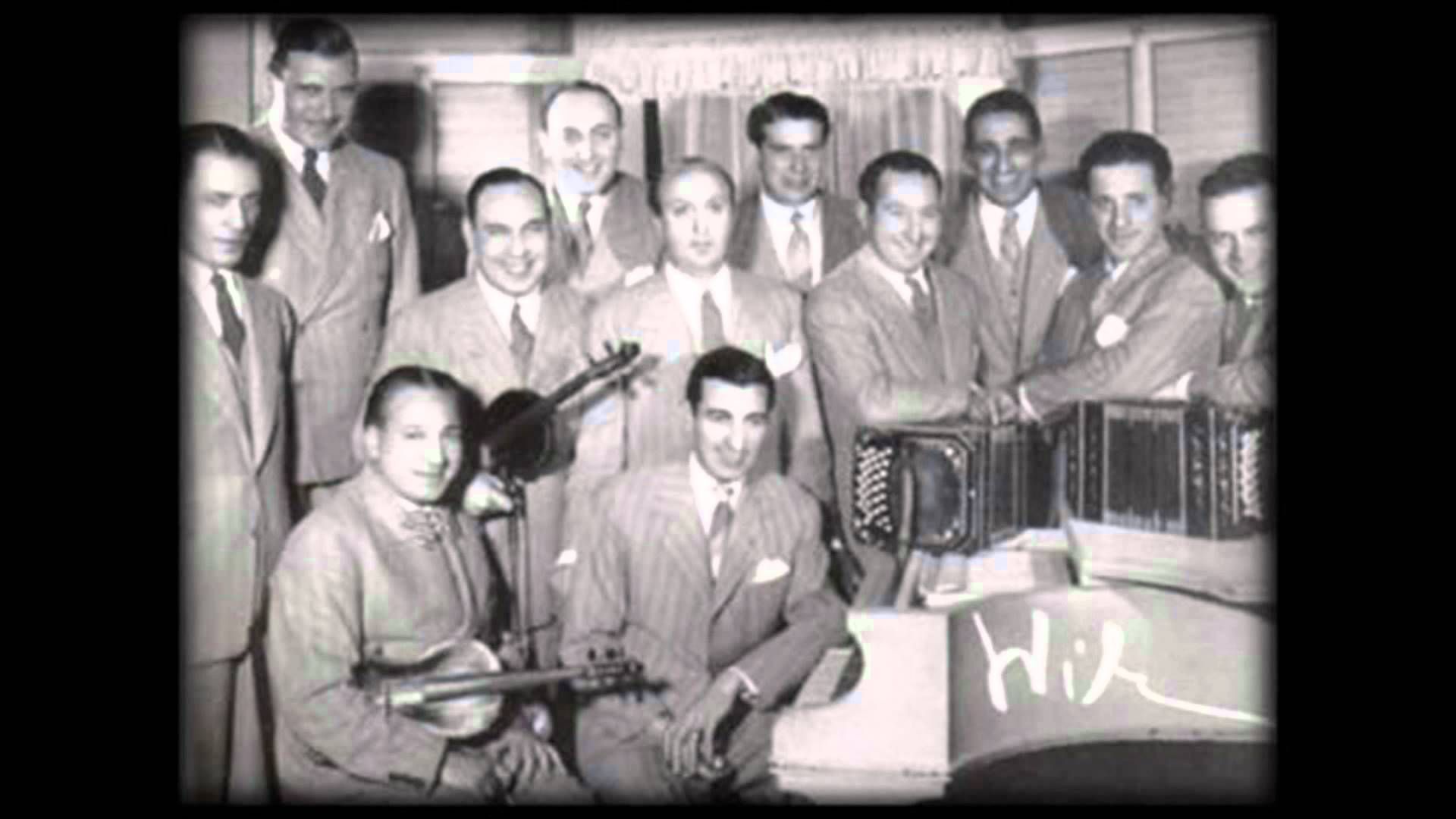
Lead bandoneon and arranger of the Juan D’Arienzo Orchestra, for ten years, identified himself with the trends of a genuine traditional origin, and his orchestra boasted, as major attraction, the precision of a difficult technical performance, in the middle of a very personal hasty rhythmic beat. What Varela strove for during his tango career was to play with his orchestra for dancers.
The Era of the Sextets
During the 1920s and earlier 30s, the sextet was the preferred formation of Tango. It was a period of greatness for the evolutionary development of the tango, primarily as music to be listened to as well as danced.
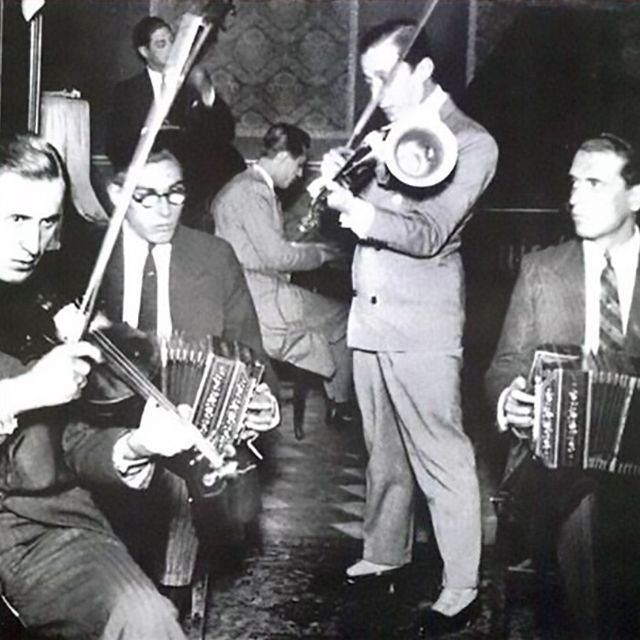
De Caro, Julio
Y su Sexteto Típico
After starting in the second decade of the 20th century, close to the great creators of the period —Eduardo Arolas, Roberto Firpo, and others—, who had changed the early tango and after being influenced by the leading pioneers of melody construction of the genre —such as Juan Carlos Cobián and Enrique Delfino—, the violinist Julio De Caro established with his sextet, as from 1924, a new and far-reaching style.
This would gravitate, as no other had, in the tango history to come by widening its spiritual horizon.
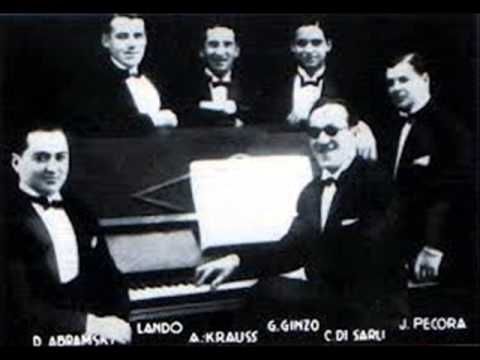
Di Sarli, Carlos
Y su Sexteto Típico
During Di Sarli’s sextet years, 1928-31, his sound still fit with the slow marching beat that was popular at the time among orchestras like Francisco Canaro’s and Osvaldo Fresedo’s (Di Sarli’s personal inspiration). However he was beginning to carve out his personal signature of a unified orchestral sound, lush melody, and soft understated rhythm.

Fresedo, Osvaldo
Y su Sexteto Típico
Recordings of late 1920s.
Born in Buenos Aires to a wealthy family seems to have influenced his art: his orchestra, refined and aristocratic, was the favorite of upper circles.
However, despite Osvaldo’s father was a rich businessman, at the age of ten, his family moved to La Paternal, a neighborhood somewhat away and humble, with flat houses in a popular surrounding which had its effect on his destiny.
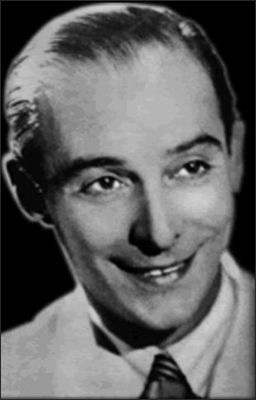
Vardaro, Elvino
Y su Sexteto
Violinist, leader and composer
(18 June 1905 – 5 August 1971)
In 1929, he put together the team Vardaro-Pugliese. In 1933, he organized, at last, his own sextet, but different inconveniences made it impossible to continue. Only a non-commercial disc with a rendition of the tango “Tigre viejo” composed by Salvador Grupillo was recorded. This seminal sextet was composed by: Aníbal Troilo and Jorge Argentino Fernández, on bandoneons, Hugo Baralis, as second violin, Pedro Caracciolo, on double bass and on piano, José Pascual, who was as well the arranger.
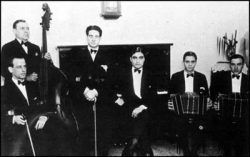
Puglisi, Cayetano
Y su Sexteto Típico
Violinist, leader and composer
(2 January 1902 – 2 November 1968)
We arrive at a very important chapter in the artistic career of this great musician. We place it in 1928, a period when the sextets blossomed. This splendid outfit he put together is always remembered with admiration and nostalgia by the lovers of good tango.
Carlos Gardel
Two things mark Carlos Gardel’s childhood and adolescence. One is personal and the other is historical. As for the personal one, he was a naturally-born musician, natural and with instinct, with a very special talent, and blessed with the ideal instrument to express it, his magnificent voice. The historical fact is that he spent his childhood and adolescence in Buenos Aires exactly at the time of the tango splendor.
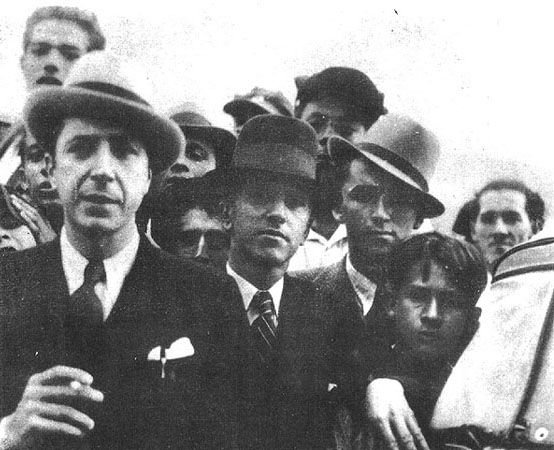
Gardel, Carlos
SINGER, SONGWRITER, COMPOSER AND ACTOR. (1890-1935)
Born in 1890, and residing in the Argentine capital as an immigrant kid, completely “Argentinized” since 1893, his early years coincided with the appearance of tango as a popular dance and, of course, with the development of the music that accompanied the dance, which soon became one of the richest traditions of the twentieth century. There are testimonies that the young boy, “El Francesito”, later “El Morocho del Abasto” —as his buddies used to call him—, learnt to dance tango and he danced it very well. However, dancing is one thing but music is a different matter. The intimate connection between Gardel and tango was established only years later, and due to several reasons.
